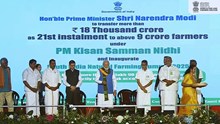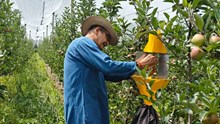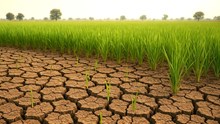
During a recent visit to the ICAR-Central Institute of Fisheries Education (CIFE) in Mumbai, Union Secretary of the Department of Fisheries, Dr. Abhilaksh Likhi, chaired a review meeting focused on exploring the potential of saline lands for shrimp farming in Haryana, Punjab, Rajasthan, and Uttar Pradesh.
The meeting brought together key stakeholders, including fisheries officials and farmers, to assess ongoing progress and address challenges in promoting inland saline aquaculture across these northern states.
The review was conducted via video conference and focused on exploring the potential of utilizing saline land for aquaculture, which could contribute to job creation and new livelihood opportunities.
The discussion highlighted both the progress and challenges in developing saline aquaculture, particularly shrimp farming. States provided updates on initiatives being implemented under major schemes such as the Pradhan Mantri Matsya Sampada Yojana (PMMSY) and the Blue Revolution.
Uttar Pradesh reported having approximately 137,000 hectares of inland saline land in districts including Mathura, Agra, Hathras, and Raebareli, indicating significant untapped potential. In Rajasthan, shrimp farming is gaining momentum in salt-affected districts like Churu and Ganganagar, where around 500 hectares are currently being used to farm species such as Penaeus vannamei, milkfish, and pearl spot.
Punjab highlighted several initiatives in Sri Muktsar Sahib and Fazilka, including the establishment of cold storage facilities and training centers. Meanwhile, Haryana took the lead, achieving over 13,900 tons of production with an investment of Rs 57.09 crore under the PMMSY scheme.
Despite these encouraging efforts, a review revealed that out of the 58,000 hectares of saline land identified across the four states, only about 2,608 hectares are currently being utilized for aquaculture. This represents a significant opportunity to transform saline-affected, agriculturally unsuitable land into profitable aquaculture hubs.
As the world’s second-largest producer of cultured shrimp, India generates over 65% of its seafood export value from shrimp alone, making this sector not only promising but also strategically vital for the country.
Farmers participating in the meeting expressed their concerns regarding the high setup costs, limited subsidy coverage, and the restrictive cap of two hectares on land use for aquaculture. They identified additional challenges such as unstable salinity levels, high land lease rates, and insufficient access to quality seeds.
Infrastructure deficits, including a lack of cold storage and market facilities, combined with rising input costs and poor price realization, were also highlighted as significant obstacles. These challenges have negatively impacted returns on investment and prompted calls for stronger support from the central government.
In response, the states proposed several policy and financial measures to strengthen the sector. These proposals included increasing the permissible unit cost to Rs 25 lakh, expanding the land usage cap from 2 to 5 hectares, and providing enhanced subsidies for polythene pond lining. Other suggestions included developing an Integrated Aqua Park in Sirsa and improving marketing systems to boost profitability. The Department of Fisheries highlighted the importance of coordinated efforts among ICAR, state governments, and stakeholders to fully harness the potential of saline aquaculture.
The meeting also called for the establishment of a National Committee to review current shrimp farming guidelines and devise a roadmap for sustainable aquaculture development in the region. Plans for awareness campaigns to encourage shrimp consumption in northern India, technical training through Krishi Vigyan Kendras (KVKs), and gap analysis in 25 targeted districts were discussed.
The states were encouraged to develop action plans tailored to beneficiaries and to share specific needs with the Department for targeted support in critical areas such as infrastructure, disease control, regulatory reform, research, and capacity building. The session concluded with a shared commitment to turn these untapped saline lands into engines of livelihood, innovation, and growth for rural India.
















